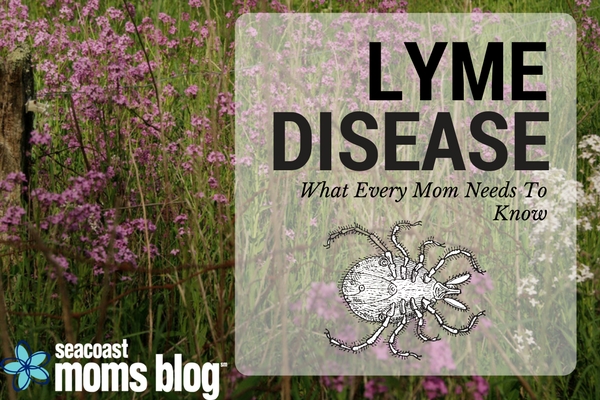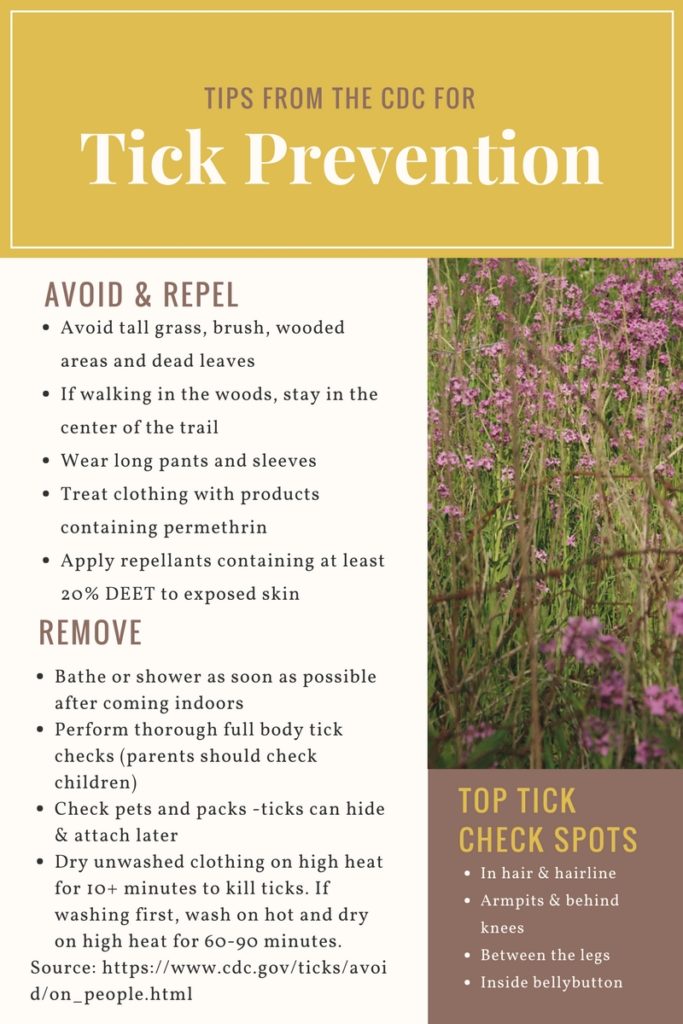One of the most frightening parts of being a parent is that there are things we cannot protect our children from. There are things that can hurt our children without us knowing. And one of those things is Lyme Disease.

About a month after my youngest daughter started kindergarten, I got a call from the school nurse. My daughter found a tick on the back of her head. The nurse tried to remove it, but it was in too deep and my daughter was, understandably, extremely emotional. I went in and picked her up. Because the tick was so deep, our doctor recommended bringing her in for further extraction (not fun, trust me). She also recommended that we do a blood draw for Lyme (also super not fun).
The results showed that she had Lyme disease. They said that she had probably had it for several months.
This diagnosis was surprising, but not that surprising. This tick-borne illness is becoming more and more common in the Seacoast area. In fact, in the past two years, more than half of my immediate family members were diagnosed with Lyme. As is typical with this disease, some of them had the characteristic bullseye rash. Some of them found a tick on their body. And some did not have any obvious signs or symptoms. That’s right, you can have Lyme and not even know it.
Many people never find a tick on them or develop the characteristic bullseye rash. In fact, one of the ways that Lyme disease can most easily be recognized in small children is through behavioral symptoms.
 Symptoms can include:
Symptoms can include:
- Fatigue
- Joint pain
- Muscle pain and weakness
- Headaches
- Fevers or night sweats
- GI and/or urinary issues
- Irritability and impulsivity
- Sleep disturbances
My daughter had pretty much all of these symptoms – but as is also typical with Lyme disease they seemed to come and go without much rhyme or reason. Her symptoms included exhaustion, disturbed sleep, headaches, back pain, and extreme emotional volatility. It absolutely breaks my heart to say that we had started to write off these complaints due to their frequency.
Although there is some debate as to the effectiveness of treatment for this disease, I am happy to say that we saw a lot of improvement after my daughter was treated. I only wish we had recognized her symptoms and had her tested sooner. However, with the absence of a tick bite or rash, it is unlikely that most doctors would have thought it necessary to have her tested for Lyme.
The medical community is divided on the prognosis for children diagnosed with Lyme disease. Some assert that one course of antibiotics is sufficient. Others believe that this disease is never fully cured and has a lasting impact. The consequences of this disease can be devastating, especially for children. However, even doctors who believe that the disease has lasting effects agree that prompt treatment is key.
Lyme disease is becoming extremely common in the Seacoast area. If you are spending time in the outdoors, please practice tick prevention techniques and tick checks. Although, as my experience demonstrates, taking preventive measures is not always enough. If you suspect that you or someone you know may have been bitten by a tick or exposed to Lyme disease, please speak with your doctor!
Sources:
More information on Lyme Disease in children:











